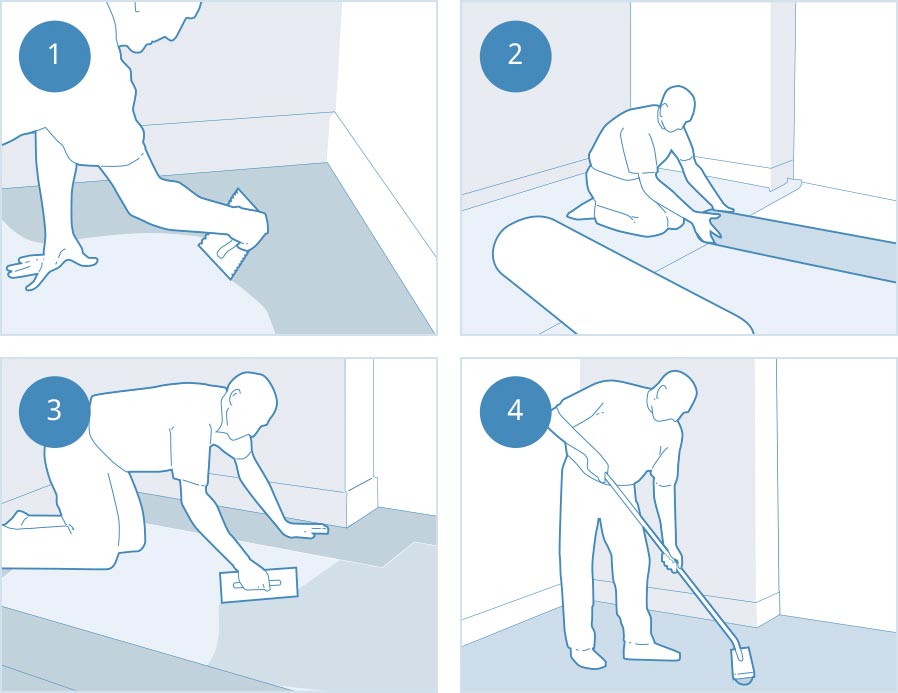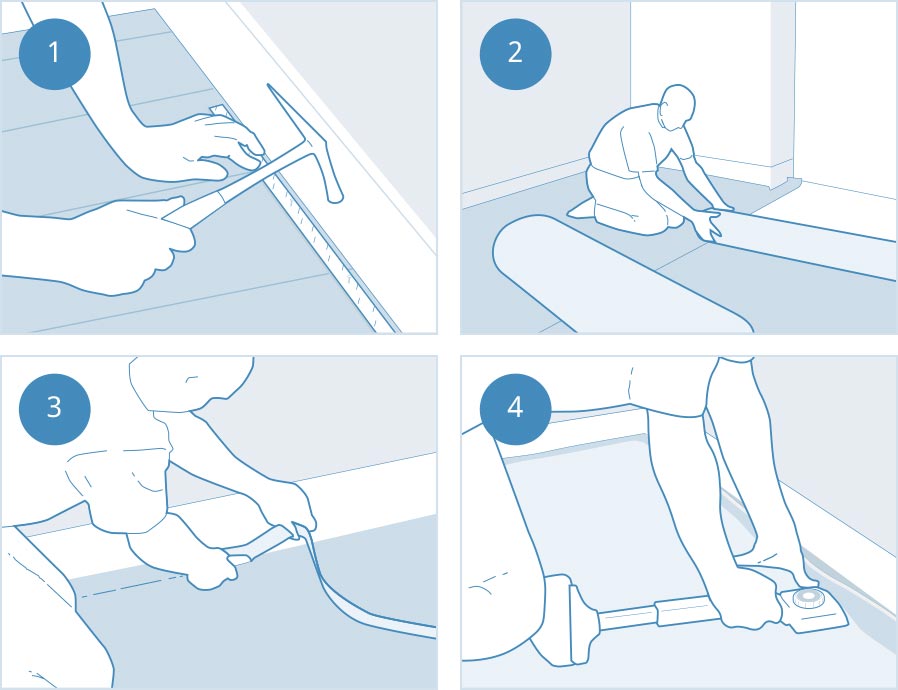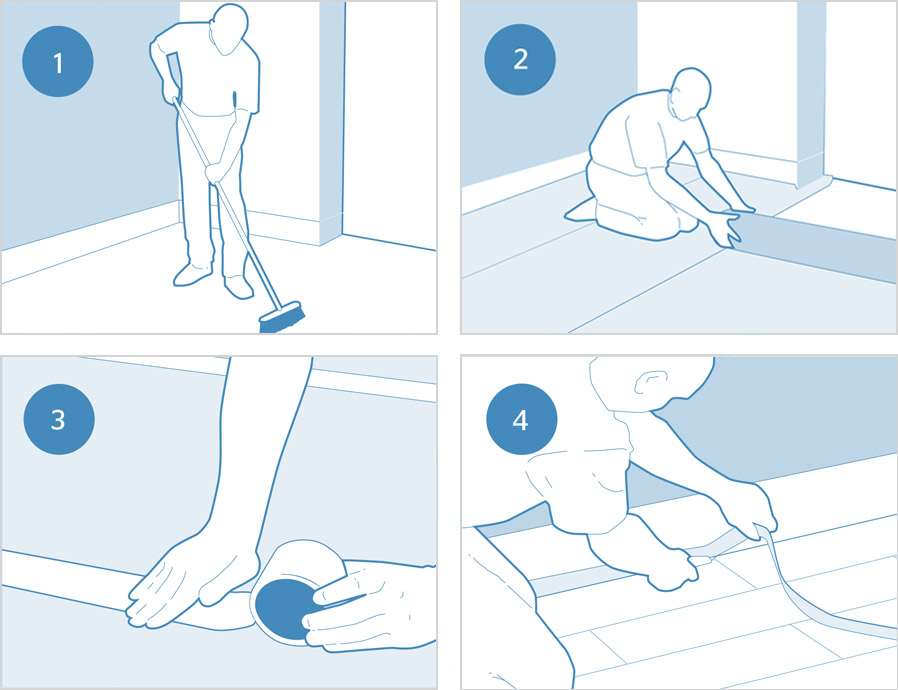
Underlay is adhered to the sub-floor using a release type adhesive. Carpet is fully adhered to the underlay using a permanent type adhesive.

Carpet is held in position using carpet gripper which is nailed to the subfloor. Carpet is stretched over the underlay and secured to the grippers.

Duralay wood & laminate underlays absorb floor irregularities, helping mask unevenness and minor blemishes found in many surfaces.
With just the right amount of give a Duralay underlay will protect against the overstraining of wood and laminate floors.
The built-in Vapourstop barrier of our Timbermate Excel and Silentfloor Gold underlays also help to protect against moisture.
Head over to our instructional videos page for video tutorials on Double-stick carpet installation using the Durafit System and Stretch-fit carpet installation using Tredaire underlay and gripperrods carpet gripper.